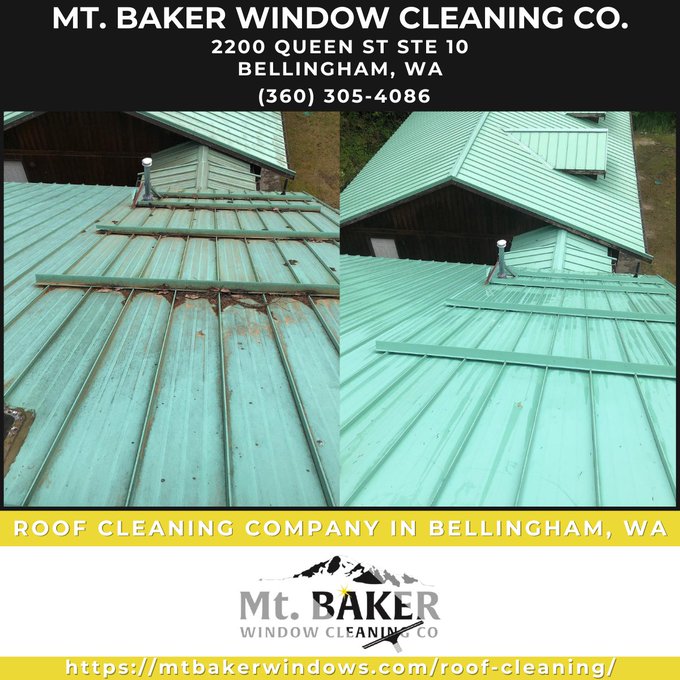Introduction
When it comes to home Mt. Baker Window Cleaning Co. Local Roof Cleaning improvement, the roof often takes a backseat. Yet, it plays a crucial role in protecting your home from the elements and maintaining your property’s value. Choosing the right roofing material is essential for durability, aesthetics, and functionality. But how do you know what suits your home best? In this comprehensive guide, we’ll explore the various types of roofing materials available, their needs, maintenance routines, and important considerations that every homeowner should keep in mind. So let’s dive into this extensive journey of “Understanding Different Types of Roofing Materials and Their Needs”!
Understanding Different Types of Roofing Materials and Their Needs
The roofing industry offers a variety of materials, each with its own set of advantages and Residential Roof Cleaning drawbacks. For homeowners looking to replace or install a new roof, it's vital to understand these materials' specific needs.
1. Asphalt Shingles: The Most Popular Choice
Asphalt shingles are by far the most common roofing material in North America. They are relatively inexpensive and come in various colors.
1.1 Advantages of Asphalt Shingles
- Cost-effective Easy to install Variety in styles
1.2 Disadvantages
- Shorter lifespan compared to other materials Susceptible to wind damage
2. Metal Roofing: A Durable Alternative
Metal roofs have gained popularity due to their longevity and energy efficiency.
2.1 Pros of Metal Roofing
- Lifespan can exceed 50 years Fire-resistant Reflects solar heat
2.2 Cons
- Higher initial cost Noise during rainstorms
3. Tile Roofing: Aesthetic Appeal
Tile roofs offer an elegant look but come with unique requirements.
3.1 Benefits of Tile Roofing
- Extremely durable Energy-efficient Low maintenance
3.2 Challenges
- Heavyweight demands additional support Expensive installation costs
4. Wood Shake: Natural Beauty
Wood shake roofs provide a classic appearance but require significant upkeep.
4.1 Advantages
- Excellent insulation properties Unique aesthetic appeal
4.2 Disadvantages
- Prone to rot and insect damage Requires regular maintenance
Common Roof Cleaning Methods
Keeping your roof clean is as essential as choosing the right material for your home’s needs.
5. Is It Worth Getting Your Roof Cleaned?
Absolutely! Regular cleaning can extend the life of your roof by preventing algae growth and debris accumulation.
6. What Type of Roof Cleaning is Best?
Soft washing is generally considered the most effective method for cleaning roofs without damaging shingles.
7. How Often Should You Clean Your House Roof?
It's advisable to clean your roof at least once a year or twice a year if you live in an area with heavy foliage.
Roof Maintenance Considerations
Maintaining your roof properly not only enhances its lifespan but also saves you money in the long run.
8. How Often Should Roofs Be Cleaned?
Cleaning intervals depend on environmental factors; however, annual inspections are recommended.
9. Can Roof Shingles Be Cleaned?
Yes! Most shingles can be cleaned effectively using gentle methods like soft washing or steam cleaning without causing damage.
Roof Cleaning Techniques Explained
Each cleaning method has its pros and cons based on material type, environmental impact, and effectiveness.
10. Is Soft Washing a Roof Worth It?
Definitely! Soft washing uses low-pressure water mixed with biodegradable cleaners that remove moss, algae, and dirt without harming shingles.
11. Does Roof Cleaning Damage Shingles?
Generally speaking, no—if done correctly using appropriate methods like soft washing or professional services.
" width="560" height="315" frameborder="0" allowfullscreen>
Understanding Environmental Impacts on Roofing Materials
Different climates affect various roofing materials differently; understanding these impacts will help in making informed choices regarding roof care.
12. What Happens if You Don't Clean Your Roof?
Neglecting regular cleaning can lead to algae growth or moss buildup which may cause leaks over time.
13. How Often Should You Spray Your Roof?
Depending on climate conditions—especially humidity—you might want to spray your roof every six months or annually for maintenance purposes.
Cost Considerations for Different Roofing Materials
Budget is often a major factor when selecting roofing materials; knowing their costs will help you manage expenses effectively.
" width="560" height="315" frameborder="0" allowfullscreen>
14. What Is the Cheapest Way to Clean a Roof?
Using homemade solutions like vinegar mixed with water can be cost-effective but may not be as efficient as professional services.
FAQs About Roofing Maintenance & Cleaning
Here are some frequently asked questions that homeowners typically have regarding roofing:
15. How Long Does Roof Cleaning Last?
16. Can I Walk on My Roof to Clean It?
While some roofs allow walking on them safely; others may not withstand added weight—always check before doing so!
17. Is Steam Cleaning a Roof Safe?
Steam cleaning is generally safe but should be performed by professionals who understand how different materials react under high temperatures.
18. Should I Pressure Wash My Roof?
Pressure washing is not recommended for most residential roofs as it can dislodge shingles leading to leaks over time!
19. Can Roof Cleaning Cause Leaks?
20. What Do Pros Use To Clean Roofs?
Professionals typically use soft wash systems combined with eco-friendly detergents that target mold growth without risking damage to surfaces involved.
Conclusion
Choosing the right roofing material involves much more than just aesthetics; it requires careful consideration of maintenance needs and local climate influences as well as ongoing care strategies like regular cleanings through methods suited specifically for each type involved! By understanding these various factors outlined here today under our umbrella topic “Understanding Different Types of Roofing Materials And Their Needs”, you'll be better prepared when making decisions about which direction best suits both personal style preferences & practical circumstances alike!
In summary: whether you opt for asphalt shingle elegance or classic tile charm—the key takeaway remains clear—investing wisely now leads towards more significant benefits later down this road ahead!
Feel free to ask if you need further information or adjustments!

